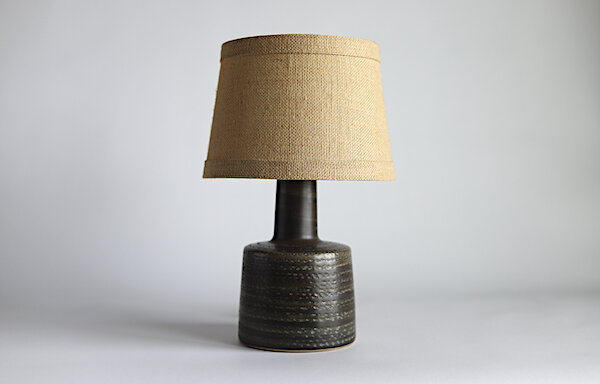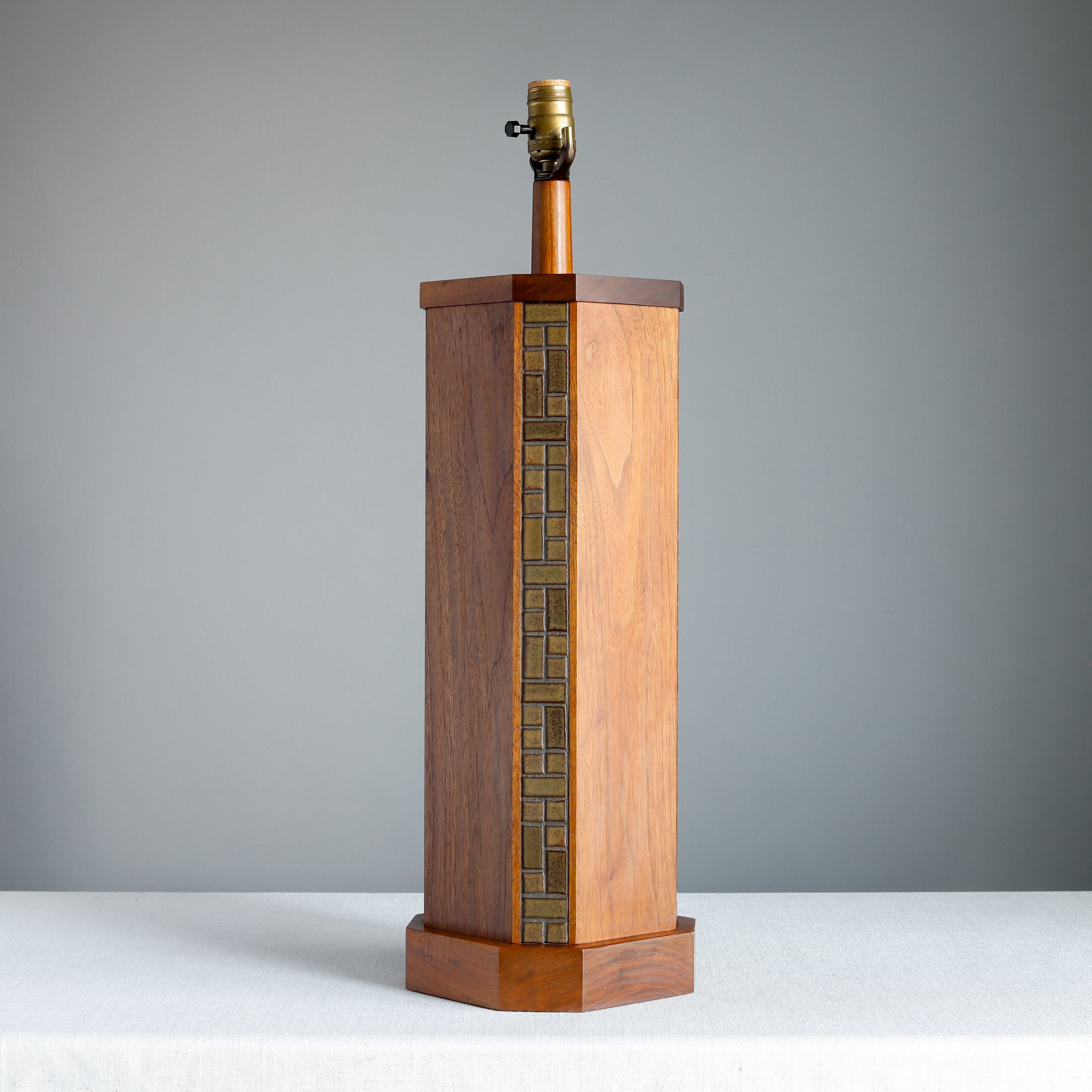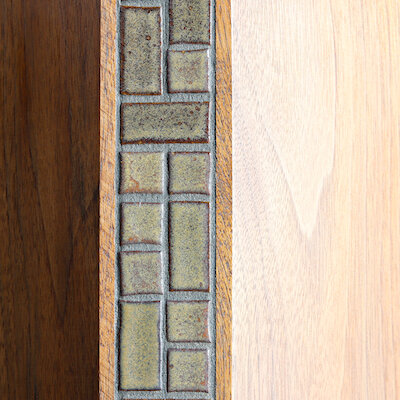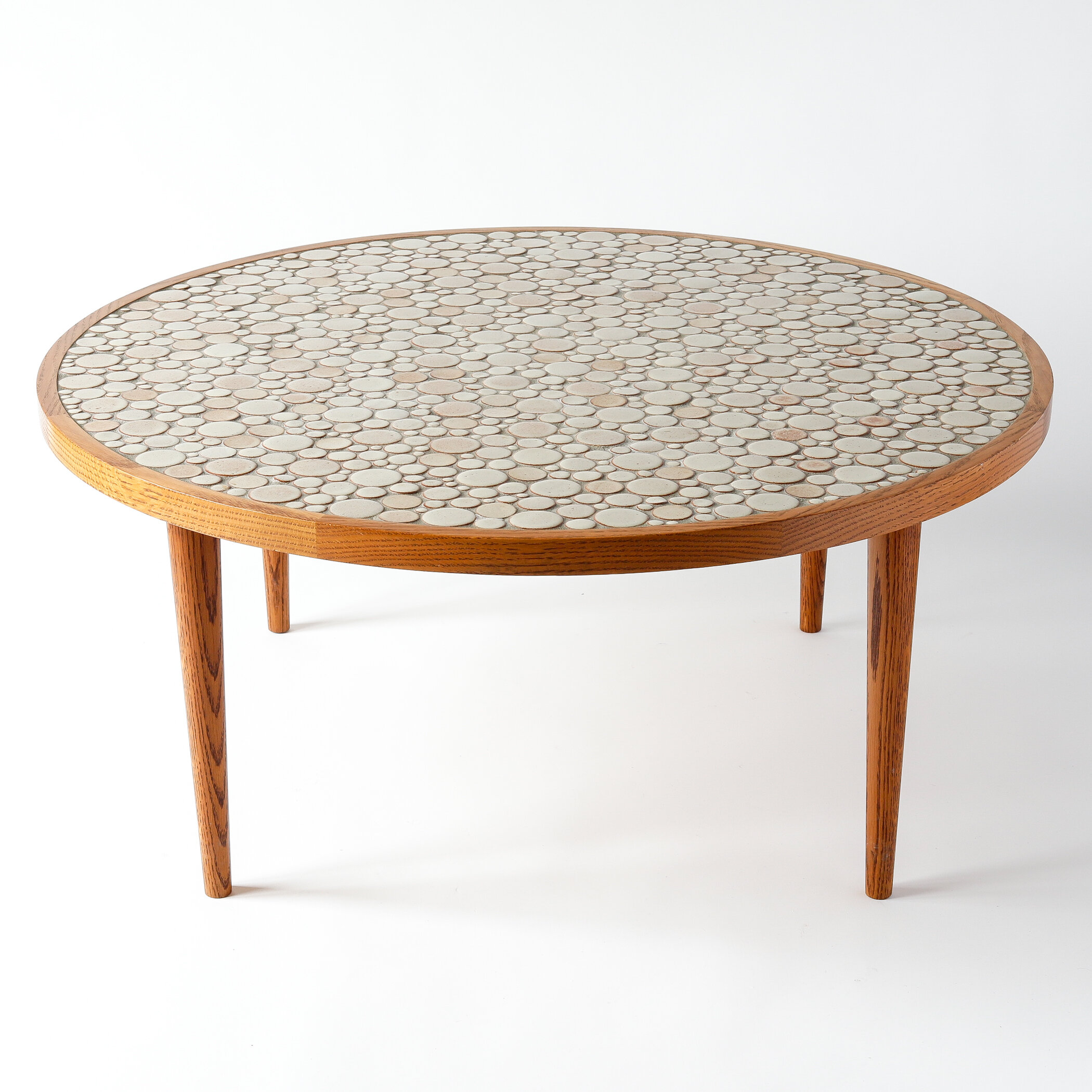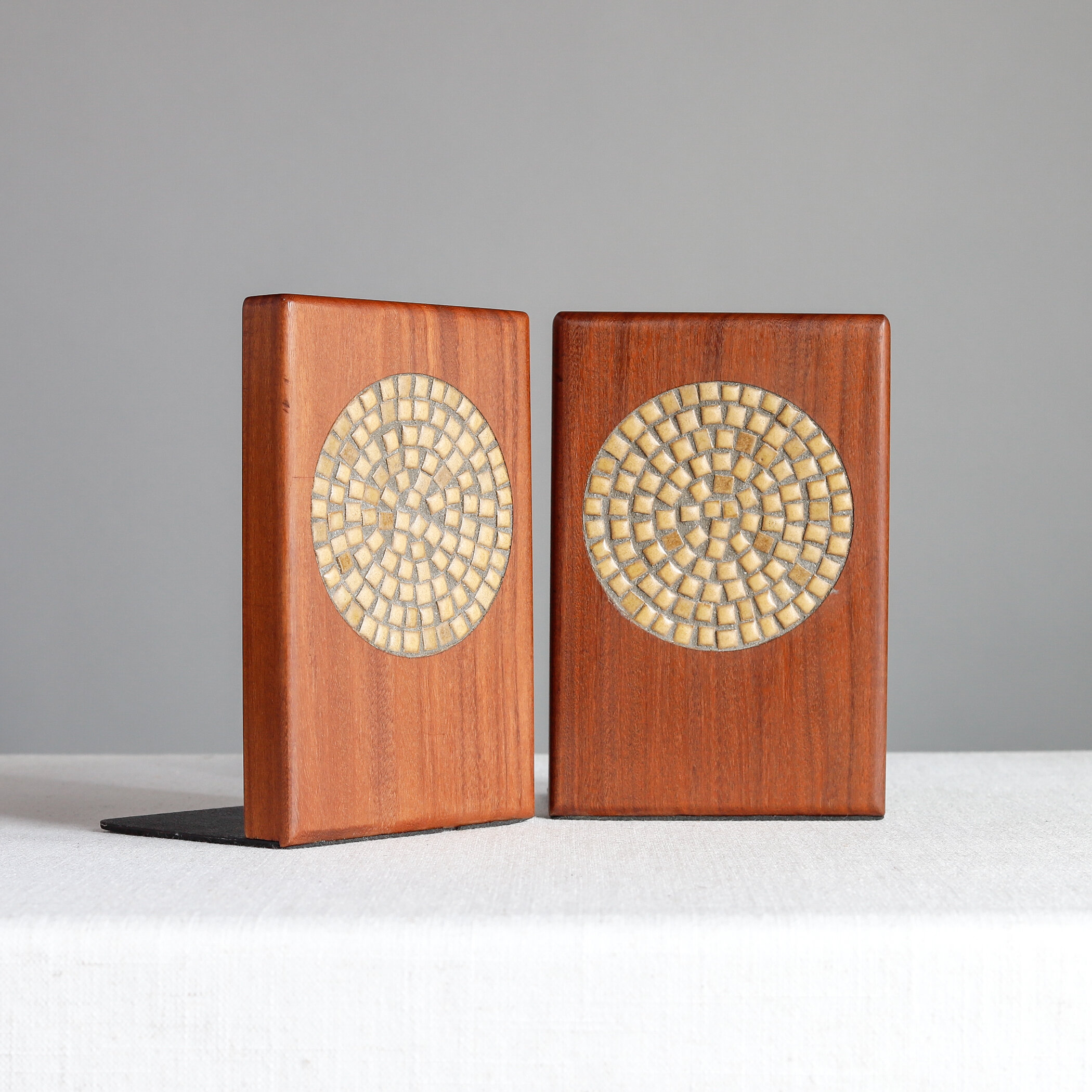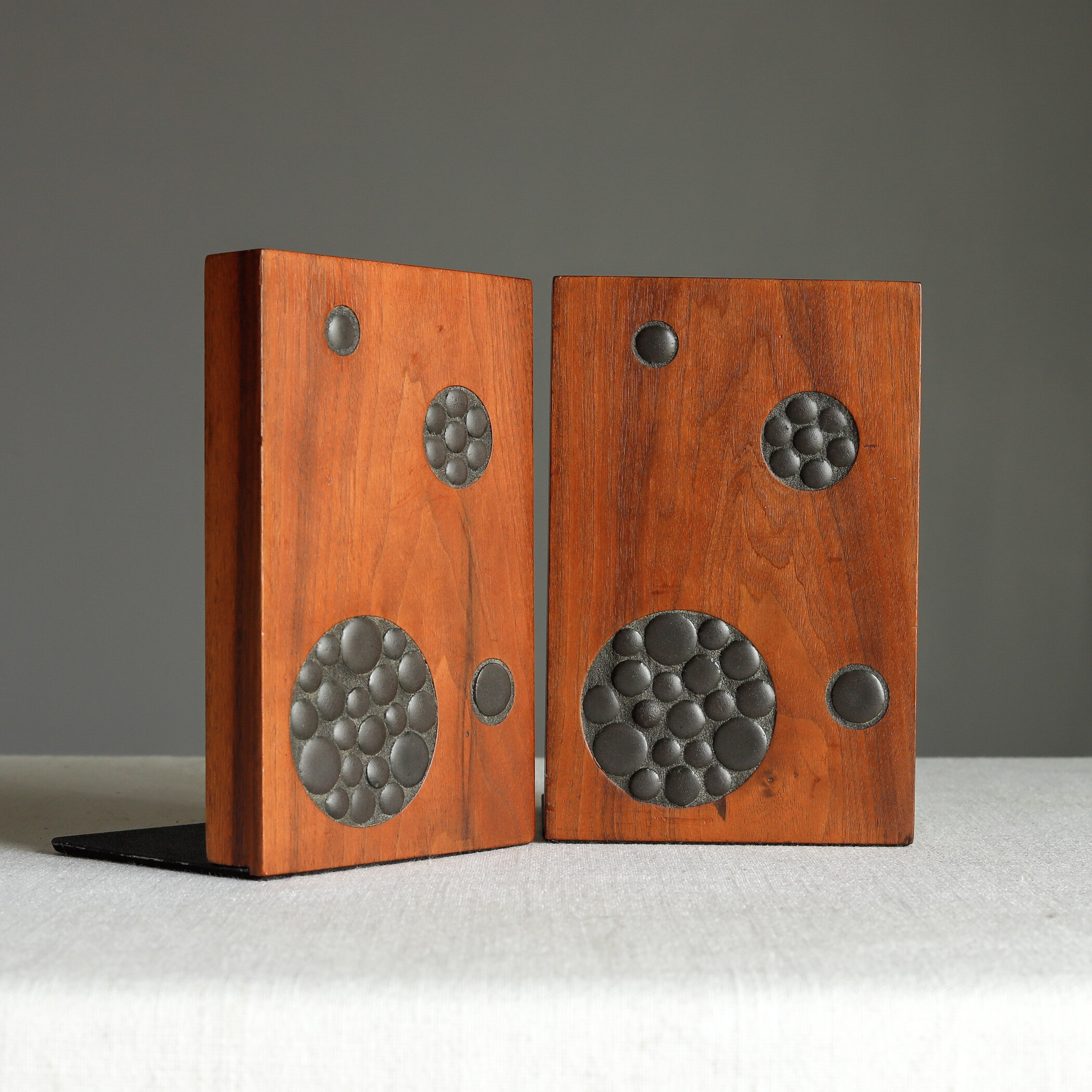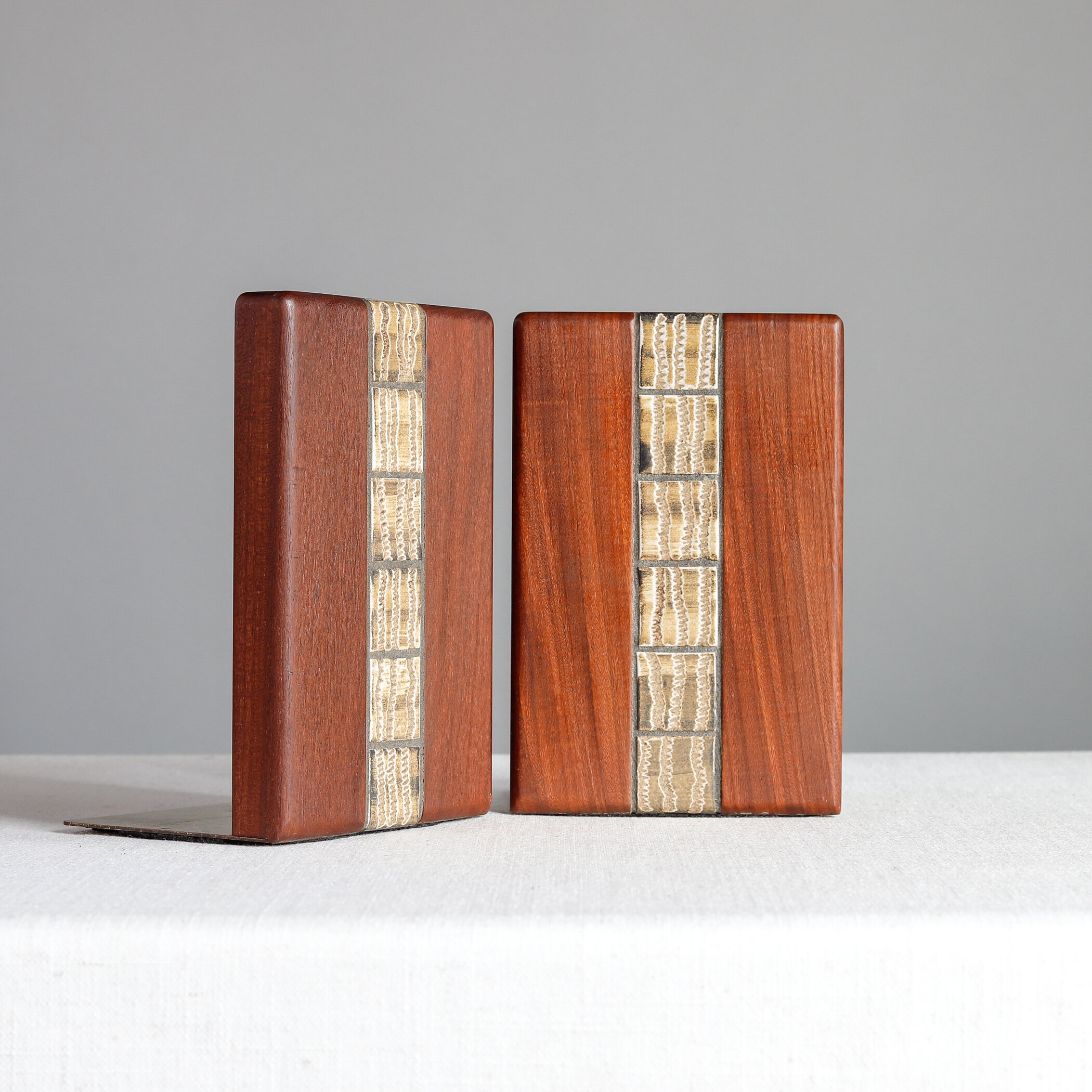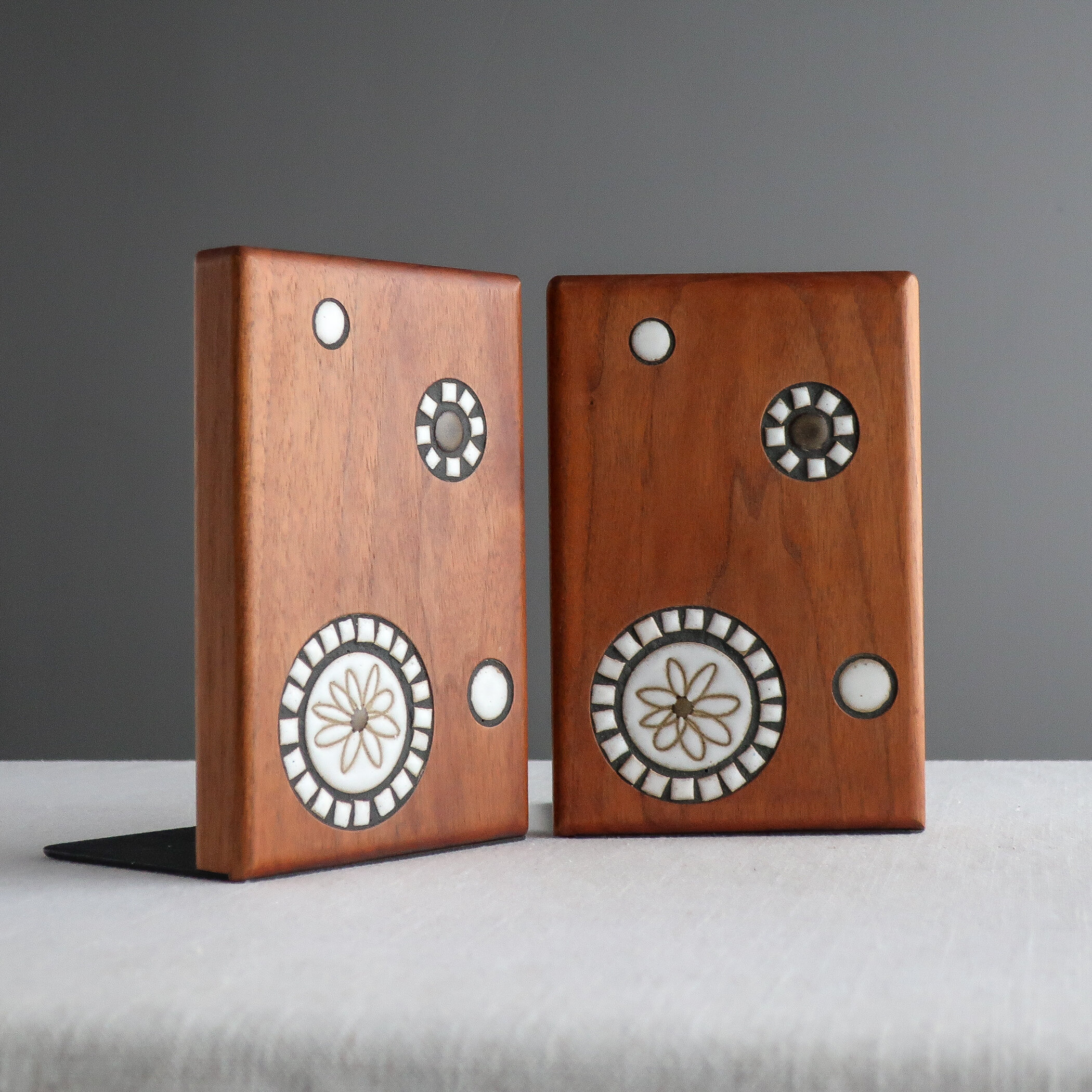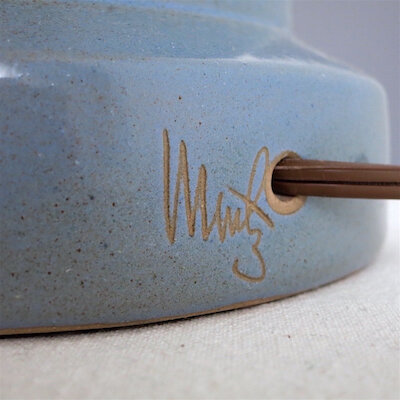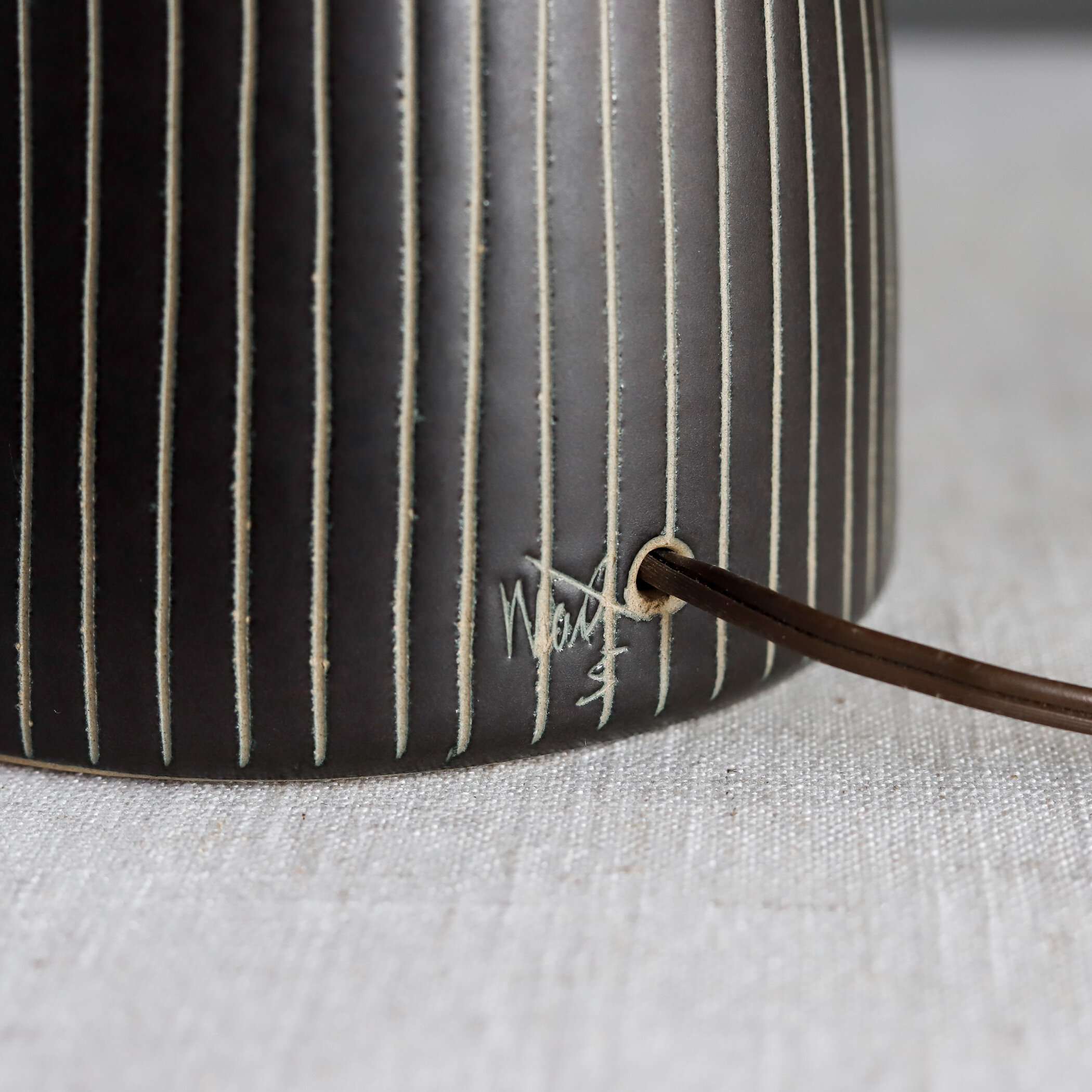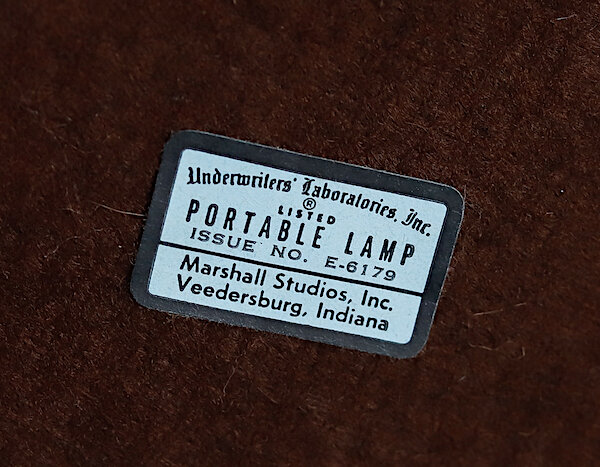During the mid-20th century, Gordon and Jane Martz were among the premier American designers and makers of ceramic lamps and other goods. Their style was in keeping with the simplicity in design desired in the years following World War II. While the Martzes’ bold, uncomplicated forms spoke to Modernists of the period, their production techniques placed them firmly in the world of handcraft, which prized the labor of artisans over machines. Lamps were their main focus, but furniture, dinnerware and other small items were produced in their Indiana facility and were shipped all over the country. Today, the popularity of their work is growing as a new audience has come to appreciate their distinctive style.
Jane Marshall and Gordon Martz met when they were students at the New York State College of Ceramics at Alfred University in western New York. They married in 1951 and quickly relocated to Jane’s hometown of Veedersburg, Indiana, north west of Indianapolis. There, her family owned Marshall Studios, a firm that had produced lamps and shades since 1922. With their formal training and talent, the couple revitalized the firm and began production of new lines of lamps and other stoneware.
Three incised stoneware lamps.
Catalogues produced by Marshall Studios in the 1950s (many are available online at www.marshallstudios.net, a valuable resource) show the firm’s transition from the traditional production under Jane’s family and upward trajectory once the couple took over. Jane and Gordon built a kiln for their ceramics when they arrived in 1951, then added another the following year, and by 1954 built a separate building with a still larger kiln.
Incised details were all done by hand.
The general style of the Martzes’ production coalesced by the mid 1950s. Their lamps featured simple shapes, solid color glazes, some incised decoration, wood accents, and fabric covered shades. The first tables with tile tops appeared around 1955, floor lamps and bookends were added by 1958, and all-wood lamps show up in catalogues from the early 1960s. Dinnerware was in constant production throughout the the firm’s history.
Similar to Zanesville’s Stoneage Modern line and Claude Conover’s large ceramic vessels (both of which were made in neighboring Ohio), the work of Jane and Gordon Martz is slightly archaicizing. It references no historical period and uses only the simplest forms, basic shapes (circle and square tiles) and hand-incised linear details This reductivist trend was typical among many designers of the period.
Wall clock with ceramic face and walnut frame.
Throughout the 1950s and ‘60s, the Martzes continued to experiment with the shapes of their lamps, introducing new forms and discontinuing them as needed. New glaze colors and textures were also added over the years.
Small table lamp with hand-textured surface and original shade.
The Martzes continued the Marshall Studios tradition of manufacturing lamp shades. Their handmade paper shades came in various shapes and sizes and were covered with various textured fabrics that coordinated with their stoneware bases. Concurrent with this, Jane pursued her interest in textiles and produced a range of hand-woven pillows and other goods.
Martz walnut and tile lamp with original shade and finial, 1960s; details below.
Original lamp shade with an open, twisted weave applied to a paper base.
Coffee table with circular tile top. Tables were made with round or square tiles, with a variety of base styles.
Martz bookends in various patterns. The harlequin pattern at the center was one of the earliest designs. Over time, bookends lost their velvet backing, and were reduced slightly in thickness.
Lamps and other goods were marked in various ways. Lamps were often hand signed by Gordon Martz at the cord hole in the back; other lamps were not signed at all. Sometimes, a UL label with the name Marshall Studios was affixed to the underside of the lamp on the felt protector, or to the socket. Tables were generally unsigned, and bookends came with a paper label that gave the name of the firm and model number of the design.










